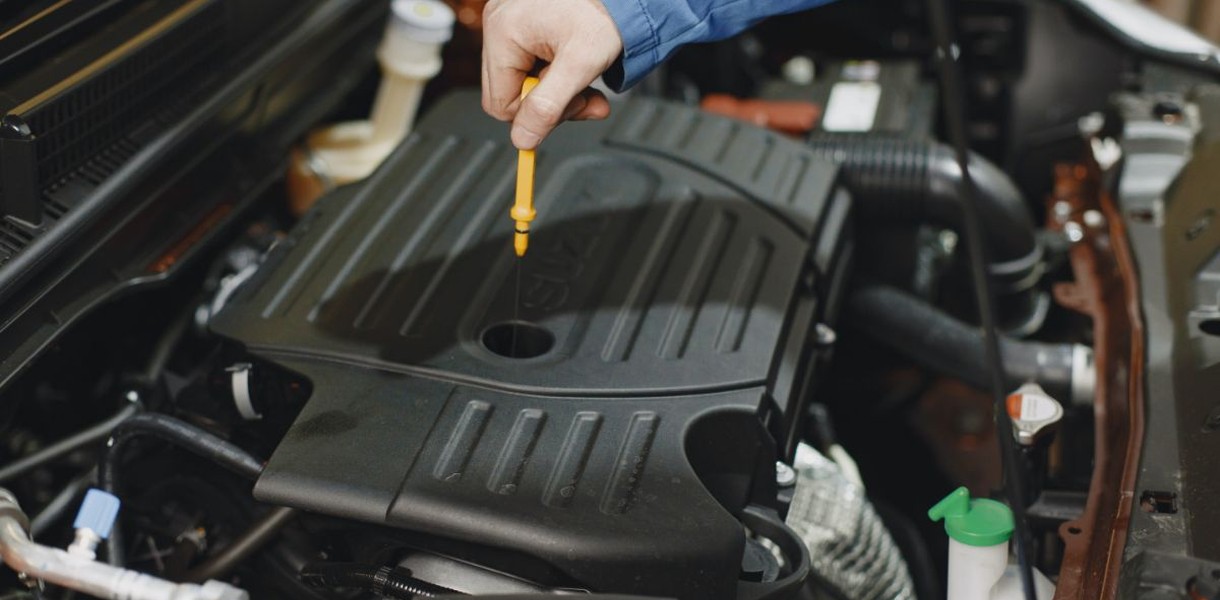One of the essential tasks of maintaining your car is to make sure that the engine oil level is always in optimum parameters. Engine oil is the 'blood' of your car's engine, ensuring proper lubrication of all internal components.
It is very important to know when and how to top up your engine oil so that you don't have any problems using your car, especially as it is the main component of any vehicle and any breakdown can be costly.
CONTENTS
When do you need an engine oil top-up?
Hot or cold engine oil top-up - how to carry out the process?
1. WHEN DO YOU NEED AN ENGINE OIL TOP-UP?

First of all, it is essential to understand that engine oil should not wear out significantly between regular, scheduled changes. However, there are situations when you might have higher oil consumption. For example, if you have a sports car, it's normal for it to consume more oil when you drive more aggressively. Or maybe you have a certain type of engine that is by design more consuming. That's why it's important to top up your oil when needed.
It is recommended that you check your engine oil level at least once a month, especially if you drive long distances or your car has high mileage. If you want a lower mileage car, you can find one in the car sales category on our website, Carsandcare.co.uk. It's also important to check for leaks. For example, if you notice oil stains under your car or see that the level is dropping quickly, you should top up the oil immediately.
Always top up the engine oil according to the manufacturer's recommendations or using the car's instruction manual. This will tell you the recommended frequency of checking and topping up as well as the type of oil needed or recommendations for other types, how to maintain the oil for longer life and how to physically change or top up the oil.
2. TOPPING UP HOT OR COLD ENGINE OIL - HOW TO DO IT

Adding engine oil is a simple operation, but it must be done correctly to avoid problems later. First of all it is important to know the type of oil to use for your car's engine. Another important aspect to keep in mind is whether you are doing a hot or cold engine oil check and top-up. The manufacturers recommend that the oil check is carried out after the engine has been started and has reached optimum operating temperature, then stopped and left for 5-10 minutes to drain in the oil bath. Following the same principle, a top-up with hot engine oil is recommended. This will ensure that the level is as desired.
If you know you can't start the engine and need to do this cold, top up with a smaller quantity, and then when you manage to start the engine and it reaches the optimum temperature, check and top up again if necessary.
To check the oil, you need to find the oil dipstick, called a dipstick, which is usually brightly coloured and positioned at the front or side of the engine. Sometimes it may be marked with an oil mark, specifically a dripping pan. Remove the dipstick, wipe it with a clean towel, cloth or napkin and reinsert it completely. Then pull it out again to check the level. At the end of the dipstick is a marked area. The oil level should be between the minimum and maximum mark.
Find the oil hole cover marked with the specific mark and use the original oil bottle or a funnel to add the liquid gradually to the filling hole. Take your time and don't pour in too much oil at once. Add a few hundred millilitres at each stage and check the level with a dipstick to avoid overfilling. Once you've added it, check the level again to make sure it's between the minimum and maximum marks on the dipstick. Keep in mind that overfilling damages your engine as much as underfilling, so don't top up to the maximum mark. A little below the line is enough. Then make sure you screw the oil filler cap on tightly to avoid leaks.
In conclusion, adding engine oil is a crucial part of maintaining your car. It's important to follow the manufacturer's recommendations and check the oil level regularly. Avoiding leaks and adding the right oil in the right amount is essential to keep your engine running optimally and prolong the life of your car. In addition, proper oil maintenance can help save you money in the long run and keep your car's performance in the best shape possible.
Photo source: pexels.com
